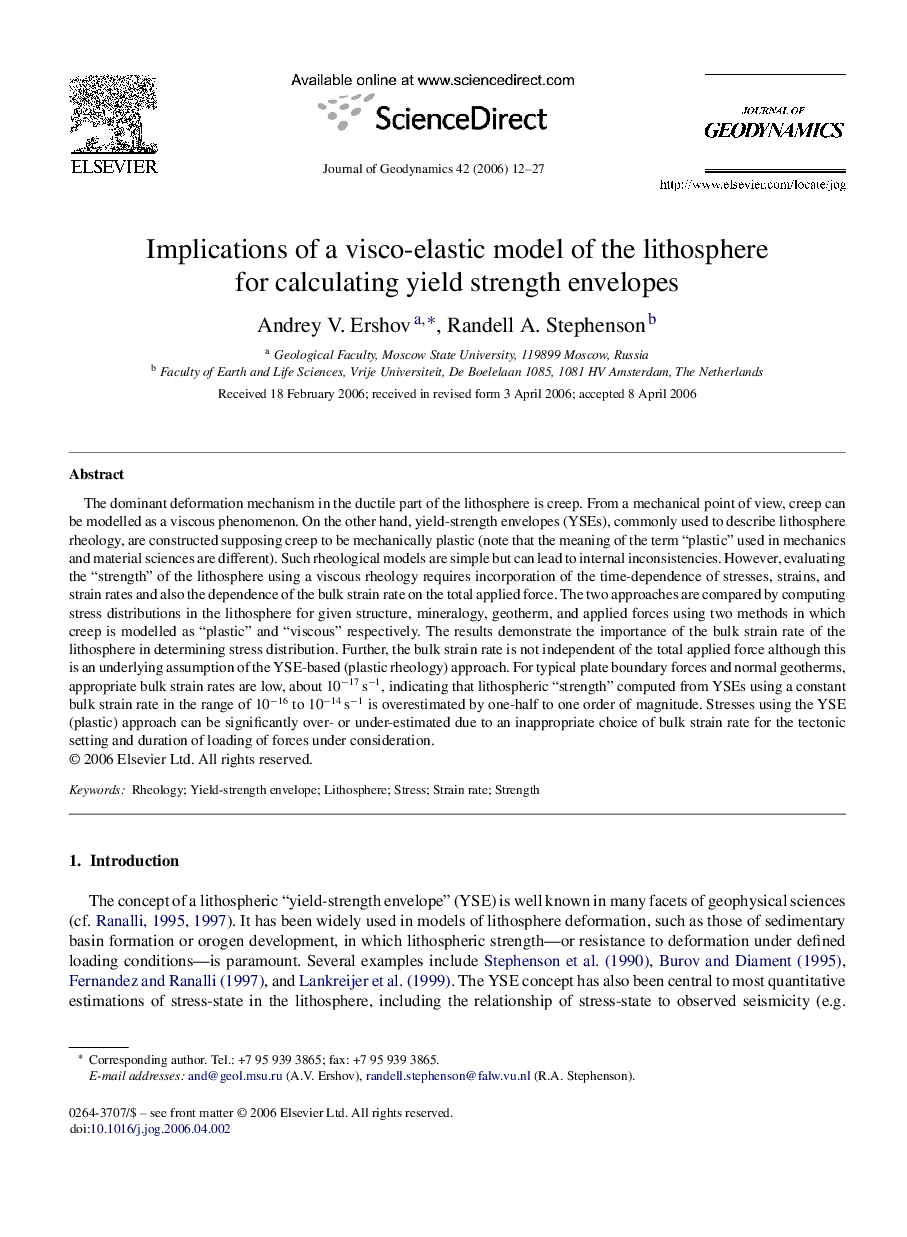| Article ID | Journal | Published Year | Pages | File Type |
|---|---|---|---|---|
| 4688742 | Journal of Geodynamics | 2006 | 16 Pages |
Abstract
The dominant deformation mechanism in the ductile part of the lithosphere is creep. From a mechanical point of view, creep can be modelled as a viscous phenomenon. On the other hand, yield-strength envelopes (YSEs), commonly used to describe lithosphere rheology, are constructed supposing creep to be mechanically plastic (note that the meaning of the term “plastic” used in mechanics and material sciences are different). Such rheological models are simple but can lead to internal inconsistencies. However, evaluating the “strength” of the lithosphere using a viscous rheology requires incorporation of the time-dependence of stresses, strains, and strain rates and also the dependence of the bulk strain rate on the total applied force. The two approaches are compared by computing stress distributions in the lithosphere for given structure, mineralogy, geotherm, and applied forces using two methods in which creep is modelled as “plastic” and “viscous” respectively. The results demonstrate the importance of the bulk strain rate of the lithosphere in determining stress distribution. Further, the bulk strain rate is not independent of the total applied force although this is an underlying assumption of the YSE-based (plastic rheology) approach. For typical plate boundary forces and normal geotherms, appropriate bulk strain rates are low, about 10â17Â sâ1, indicating that lithospheric “strength” computed from YSEs using a constant bulk strain rate in the range of 10â16 to 10â14Â sâ1 is overestimated by one-half to one order of magnitude. Stresses using the YSE (plastic) approach can be significantly over- or under-estimated due to an inappropriate choice of bulk strain rate for the tectonic setting and duration of loading of forces under consideration.
Related Topics
Physical Sciences and Engineering
Earth and Planetary Sciences
Earth-Surface Processes
Authors
Andrey V. Ershov, Randell A. Stephenson,
